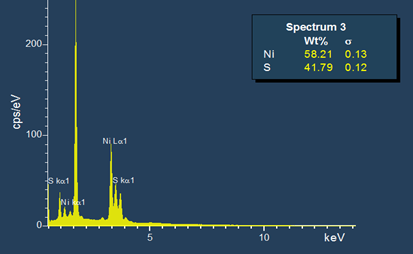Assessing the Influence of Aluminum Dopant on the Morphological and Structural Characteristics of NiS Thin Film Material Deposited by Chemical Bath Deposition Technique
Keywords:
Assessment, Aluminum, Structural and Morphological properties, Chemical Bath Deposition, Dopant, Nickel sulphideAbstract
Based on the influence of dopant like aluminum on some sulphide based thin film materials it has become paramount to carry out an assessment of chemical bath deposited Nickel sulphide doped with aluminum has been carried with the intension to ascertain the impact of the dopant concentration on the morphological and structural properties of the as-deposited NiS thin film sample and the aluminum doped, AlNiS thin film with different concentration of aluminum. It was revealed from the result as obtained from the work that both the morphological and structural properties that there were tremendous effect on the crystallinity, grain-size as depicted in figures and computed values in which the values of the lattice constant, dislocation density, micro-strain and grain-size as computed at the same preferred plane within the same diffraction angles are found to vary thereby indicating that there is clear evidence of the effect of aluminum doping concentration on the Nickel sulphide thin film developed with aluminum.

Published
How to Cite
Issue
Section
How to Cite
Most read articles by the same author(s)
- Emmanuel Ifeanyi Ugwu, Barnaba Abel Adeiza, Hilary Uche Igwe, Ikpughul Sunday Iyua, Electrical and Solid State Properties of Aluminum Doped Nickel Sulphide Thin Film by Chemical Bath Method , Nigerian Journal of Physics: Vol. 34 No. 4 (2025): Nigerian Journal of Physics - Vol. 34 No. 4




